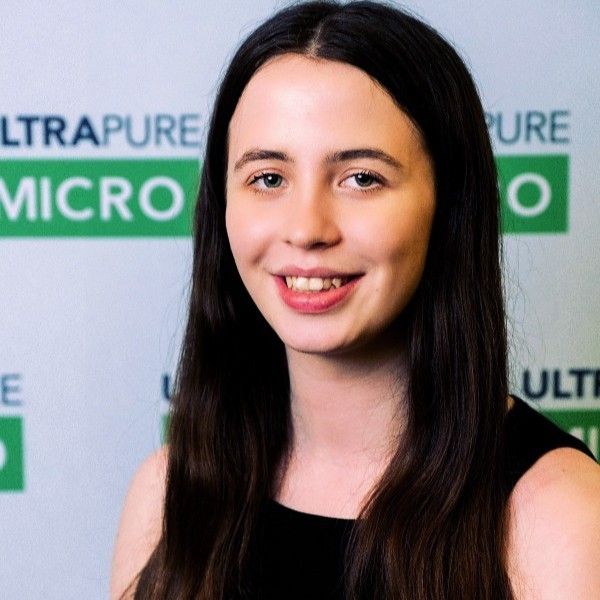Emerging trends for UPW and wastewater treatment
Share this insight
Semiconductor companies are expanding fab operations and building new plants around the world to meet increasing chip demand, meaning more water will be used to support growing production. Moreover, as the industry advances to 5-nanometer (nm) technology nodes or below, wafer cleaning and rinse processes must become even more stringent, which will raise the volume of UPW use per wafer.
On the other hand, fabs are under pressure to save water due to global water scarcity, especially in arid regions. In 2015, the International Technology Roadmap for Semiconductors (ITRS) projected that water consumption for 300 millimeter (mm)/450 mm wafers could drop from 7.8 liters per square centimeter (L/cm2) in 2013 to 4.6 L/cm2 in 2028, while water recycling could expand from 50% to 90% during the same period (see figure 1). To accomplish this goal, semiconductor fabs will need more efficient methods to use and recycle UPW.
Semiconductor wafer production can account for 75-84% of a typical fab’s water consumption, meaning means that 75-84 gallons of every 100 gallons of incoming water are treated for UPW applications.
After UPW is used at the tool, the waste UPW can be drained to multiple sources, depending on the use and the contaminants. For example, if the used UPW does not contain hazardous chemicals, it can be sent directly to cooling towers, or pretreated and reclaimed via reverse osmosis and ion exchange (IX) before being returned to the UPW storage tank. However, some of the wafer production steps (e.g., wet etch, chemical-mechanical planarization [CMP], lithography and electroplating) often generate toxic/hazardous species such as heavy metals, fluoride, oxidizers, toxic organics and perfluoroalkyl substances (PFAS). These must be removed before the water can be safely discharged to public water works and reused.
During the reclamation and hazardous material removal process, it is essential to ensure high recovery and little secondary waste. Compared to other treatment methods, IX resins provide unique advantages in high selectivity, fast kinetics, small footprint, low capital investment, low energy consumption and – most importantly – the ability to remove trace contaminants without generating much secondary waste.
To keep pace with fast chip development down to 2nm technology nodes, IX resin suppliers are preparing for new emerging target species in UPW and wastewater – for example; trace hydrogen peroxide after ultraviolet treatment, PFAS waste from lithography, and cobalt/ruthenium/molybdenum as the new metal interconnect materials in CMP wastewater. To be successful, all these efforts require broad collaboration among fabs, original equipment manufacturers and chemical/equipment/media suppliers.
In alignment with fab operational sustainability initiatives, IX resin manufacturers are also embracing new technologies for green production without toxic solvents, using sustainable raw materials and developing even better regeneration efficiency.
Share this insight



